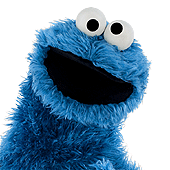Goodbye Neigboor
ROGERS DIED at his Pittsburgh home, said family spokesman David Newell, who played Mr. McFeely on the show. Rogers had been diagnosed with stomach cancer sometime after the holidays, Newell said.
From 1968 to 2000, Rogers, an ordained Presbyterian minister, produced the show at Pittsburgh public television station WQED. The final new episode, which was taped in December 2000, aired in August 2001, though PBS affiliates continued to air back episodes.
Rogers composed his own songs for the show and began each episode in a set made to look like a comfortable living room, singing “It’s a beautiful day in the neighborhood,” as he donned sneakers and a zip-up cardigan.
His message remained a simple one throughout the years, telling his viewers to love themselves and others. On each show, he would take his audience on a magical trolley ride into the Neighborhood of Make-Believe, where his puppet creations would interact with each other and adults.
Rogers did much of the puppet work and voices himself.
A WIDE AUDIENCE
The show gained a wide audience among children and parents who appreciated its simple lessons and Rogers’ soothing manner.
Rogers taught children how to share, how to deal with anger and even how not to fear the bathtub by assuring them they’ll never go down the drain.
During the Persian Gulf War, Rogers told youngsters that “all children shall be well taken care of in this neighborhood and beyond — in times of war and in times of peace,” and he asked parents to promise their children they would always be safe.
Rogers came out of broadcasting retirement last year to record four public service announcements for the Public Broadcasting Service telling parents that children might be confused by the anniversary of the Sept. 11 attacks.
“They don’t understand what an anniversary is, and if they see the tragedy replayed on television, they might think it’s happening at that moment,” he said.
Advertisement
The series remained popular through the years, including with children of baby boomers who watched the show growing up. Its ratings peaked in 1985-86 when approximately 8 percent of all U.S. households with televisions tuned in. By the 1999-2000 season, viewership had dropped to about 2.7 percent, or 3.6 million people.
One of Rogers’ red sweaters hangs in the Smithsonian Institution.
LISTENING WAS KEY COMPONENT
As other children’s programming opted for slick action cartoons, Rogers stayed the same and stuck to his message.
“It looks like nothing much happens,” Hedda Sharapan, an associate producer with the show, said in 2001. “Listening has been one of the main focus points.”
Rogers was born in Latrobe. He was ordained as a Presbyterian minister in 1962 with a charge to continue his work with children and families through television.
He studied early childhood development at the University of Pittsburgh’s graduate school and consulted for decades with the late Dr. Margaret McFarland, an eminent child development expert at the university. The show examined the tribulations of childhood, including anger, fear, even a visit to the dentist.
At a ceremony marking the 25th anniversary of the show in 1993, Rogers said, “It’s not the honors and not the titles and not the power that is of ultimate importance. It’s what resides inside.”
Off the set, Rogers was much like his television persona. He swam daily, read voraciously and listened to Beethoven. He once volunteered at a state prison in Pittsburgh and helped set up a playroom there for children visiting their parents.
Rogers was an unseen puppeteer in “The Children’s Corner,” a local show he and Josie Carey launched at WQED in 1954. In seven years of unscripted, live television on the show, he developed many of the puppets used in “Mister Rogers’ Neighborhood,” including King Friday XIII, Daniel Striped Tiger and Curious X the Owl.
Rogers accepted an offer to develop his own 15-minute show in Canada. He brought the show, called “Misterogers,” back to Pittsburgh and in February 1968 began its public broadcasting debut.
Rogers’ gentle manner was the butt of some comedian’s jokes. Eddie Murphy parodied him on “Saturday Night Live” in the 80’s with his “Mister Robinson’s Neighborhood,” a routine Rogers found funny and affectionate.
Rogers is survived by his wife, Joanne, a concert pianist; two sons and two grandsons.



 Welcome to the Muppet Central Forum!
Welcome to the Muppet Central Forum!.jpg) Christmas Music
Christmas Music Macy's Thanksgiving Parade
Macy's Thanksgiving Parade Sesame Street debuts on Netflix
Sesame Street debuts on Netflix Back to the Rock Season 2
Back to the Rock Season 2 Sam and Friends Book
Sam and Friends Book Jim Henson Idea Man
Jim Henson Idea Man Bear arrives on Disney+
Bear arrives on Disney+